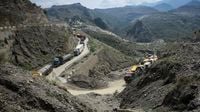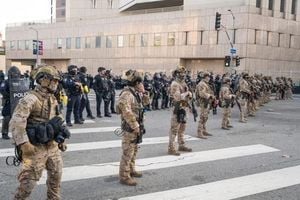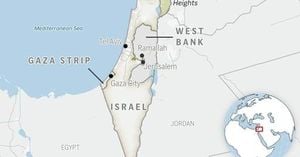In a turbulent week along Pakistan’s northwestern frontier, a series of high-stakes military operations against the Pakistani Taliban have left dozens dead, underscoring the persistent security challenges facing the region. According to statements released by the Pakistani military on September 13, 2025, security forces launched raids on multiple militant hideouts near the Afghan border, resulting in fierce clashes that killed at least 12 Pakistani soldiers and 35 militants. The violence, which unfolded over the past two days, reflects a broader surge in militant attacks that has rattled Pakistan’s border provinces in recent years.
The first of the deadly encounters took place in Bajaur, a rugged district in Khyber Pakhtunkhwa province. Here, security forces targeted a known stronghold of the Pakistani Taliban, also known as Tehrik-e-Taliban Pakistan (TTP), killing 22 militants in what the army described as an intelligence-based operation. Shortly after, a separate operation in the volatile district of South Waziristan resulted in the deaths of 13 more militants. However, the cost was steep: twelve soldiers lost their lives in South Waziristan, their sacrifice honored by the military as they were said to have “fought gallantly, paid the ultimate sacrifice and embraced martyrdom.”
The military’s official statement, reported by multiple outlets including the Associated Press and Arab News, did not mince words about the origins of the threat. It accused the militants of using Afghan soil as a staging ground for attacks in Pakistan—a claim that has become a recurring theme in Islamabad’s security discourse since the Afghan Taliban seized power in Kabul in 2021. The Pakistani military urged the Taliban government in Kabul “to uphold its responsibilities and deny use of its soil for terrorist activities against Pakistan.”
While the Afghan Taliban and the Pakistani Taliban are distinct entities, they are closely allied. The TTP, which has claimed responsibility for most of the recent attacks on Pakistani soil, has reportedly found sanctuary across the border since the collapse of the previous Afghan government. This cross-border haven has emboldened the group, fueling a resurgence of violence that has particularly targeted Pakistan’s security forces and destabilized the Khyber Pakhtunkhwa and Balochistan provinces.
The military also described the slain militants as “Khwarij,” a term with historical and religious connotations that the government uses for the Pakistani Taliban. In a further escalation, the army alleged that the militants were backed by India—a claim frequently made by Islamabad but consistently denied by New Delhi. Notably, the military did not provide evidence to substantiate this accusation, and there was no immediate response from either the Taliban government in Kabul or Indian officials. As reported by Al Jazeera, “Pakistan has long accused India of supporting the Pakistani Taliban and separatists in Baluchistan, charges that New Delhi denies.”
This week’s violence is part of a broader pattern that has seen militant attacks spike across Pakistan’s western borderlands. According to the AFP news agency, nearly 460 people—most of them security personnel—have been killed in attacks by armed groups since January 1, 2025, in Khyber Pakhtunkhwa and Balochistan alone. Last year was the deadliest in nearly a decade, with more than 1,600 deaths, nearly half of them soldiers and police officers, as reported by the Islamabad-based Center for Research and Security Studies. The Pakistani Taliban has been responsible for the majority of these attacks, and its resurgence has stoked fears of a return to the dark days when the group controlled large swathes of territory along the border.
The sense of unease is palpable among local residents. In recent weeks, graffiti bearing the Pakistani Taliban’s name has appeared on buildings in several districts of Khyber Pakhtunkhwa, raising alarms about the group’s growing influence. As one local government official told AFP, “the number of Pakistan Taliban fighters and attacks had increased,” fueling anxiety that the region could slide back into the chaos of the so-called war on terror era.
The military’s operations this week were not limited to Bajaur and South Waziristan. In a separate clash in the Lower Dir area, seven soldiers and ten militants were killed after security forces discovered yet another militant hideout. The TTP claimed responsibility for these attacks via social media, further highlighting the group’s emboldened posture since the Afghan Taliban’s return to power.
Pakistan’s leaders have repeatedly called on the Taliban government in Kabul to crack down on militant groups operating from Afghan territory. However, the complexities of the relationship between the two Taliban factions—and the broader geopolitical interests of regional players—have made progress elusive. Islamabad’s allegations of Indian involvement add another layer of tension to an already fraught situation, even as New Delhi flatly rejects any suggestion of support for militant groups targeting Pakistan.
The recent clashes have once again brought the spotlight onto the fragile security environment in Pakistan’s border regions. The military’s assertion that the militants were “backed by India” without providing evidence has drawn skepticism from some quarters, while others see it as part of a broader strategy to internationalize the conflict and pressure Kabul to act. Regardless, the immediate reality is grim: Pakistan’s security forces continue to pay a heavy price in their battle against a resilient and adaptive enemy.
As the dust settles from the latest round of fighting, the question remains: what will it take to bring lasting stability to Pakistan’s restive borderlands? The answer is far from simple. The interplay of local grievances, cross-border sanctuaries, and regional rivalries has created a combustible mix that defies easy solutions. For now, the soldiers and civilians living in these troubled provinces can only hope that their sacrifices will ultimately yield a more secure future.
With the specter of renewed violence looming large, the events of this week serve as a stark reminder of the challenges that lie ahead—not just for Pakistan, but for the broader region as well.






